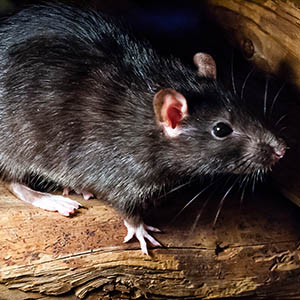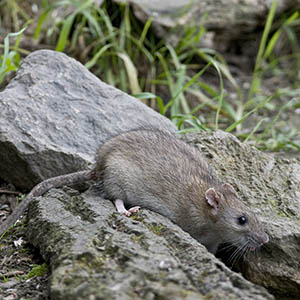Roof Rat vs Norway Rat
There are two very common types of rats in the Seattle area. The roof rat and the Norway rat. These two rats give commercial businesses and homeowners in the Seattle area the most trouble.
During the winter months these vermin like to come inside and can do damage to your home or business. Being able to identify the roof rat vs Norway rat will help you understand their habits and keep them from doing damage to your property.
Identifying Roof Rats

Roof rats are smaller than the Norway rat. Their bodies are slender and can be around 6 inches long. They’re a darker color, even black in appearance and their tail is as long as their body. They have pointed ears and are also known as black rats because of their dark fur and grey underside.
The roof rat vs Norway rat like to build nests in the insulation in your attic. Here they breed and can have litters of up to eight baby rats. This can lead to foul odors and bubbling paint in your walls and ceiling as they urinate in the nest.
It’s important to keep branches and vegetation away from your roof because roof rats love trees and use them to gain access to your roof and attic. They also use power lines and can be found running along fences.
Identifying Norway Rats

The Norway rat vs roof rat has a thicker body. They can be up to 10 inches long, but their tail is shorter than the length of their body. Norway rats are also known as brown rats, sewer rats, and wharf rats.
They are a brown or grey color with a white belly. Norway rats are commonly found in wood piles, crawlspaces, and in basements. They like lower levels of a home or business and can have up to six baby rats in their litter.
There’s a difference in in identifying the roof rat vs Norway rat when it comes to their droppings. Roof rats have smaller football shaped droppings while Norway rats have larger more rounded droppings.
What Attracts the Roof Rat vs Norway Rat
The roof rat vs Norway rat are attracted to high up places like roofs and attics. But all rats are attracted to properties that provide food, water, and shelter. They like to eat garbage, food from your garden, and even dog or other pet feces. Stinky odors or other food related smells can attract roof rats and Norway rats to your home or business.
It’s important to keep food sources away from roof rats and Norway rats. Items like garbage cans, bird feeders, and pet food should be stored in a safe secure location. You should also take precaution to limit access to gardens and fruit trees commonly found in the Seattle area.
How To Get Rid of Roof Rats and Norway Rats in Seattle
Seattle has become one of the most rat-infested cities in the US and rats can be tricky to control and exterminate. Both roof rats and Norway rats can squeeze through a hole the size of a quarter. They can also chew holes in your roof or siding to make spaces large enough to fit through.
If you’re having trouble with roof rats, Norway rats or other rodents, contact Pest Fighter at 206-236-BUGS. We’re pest control experts skilled at rat control. We remove things that attract rats, identifying and sealing all entry points and using safe rat traps to solve the problem.







